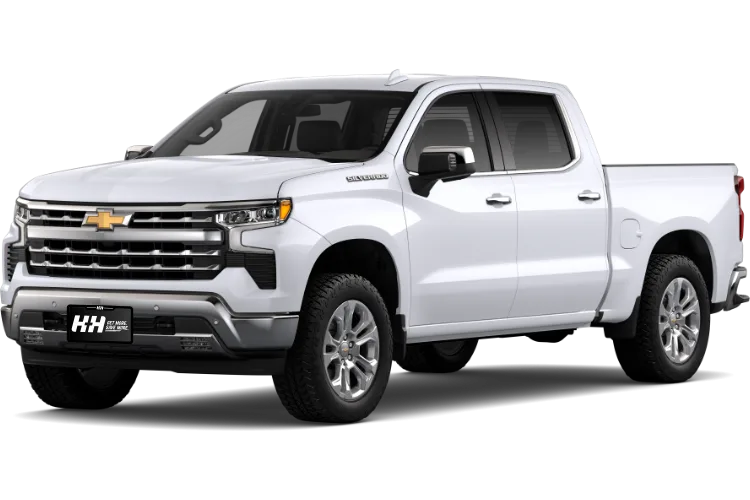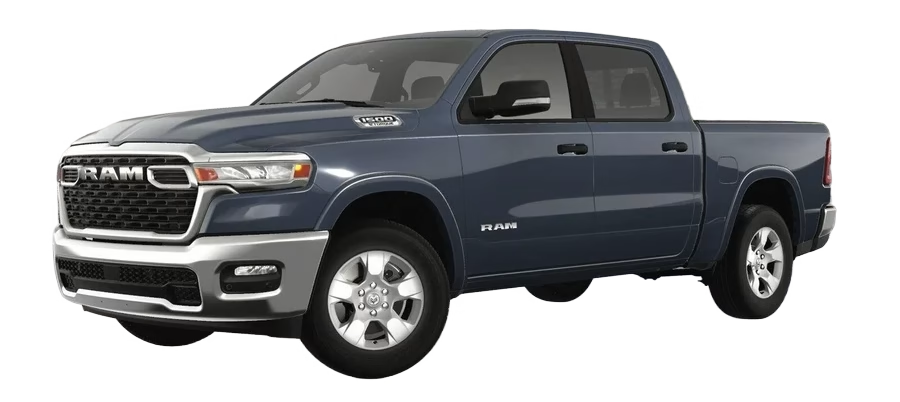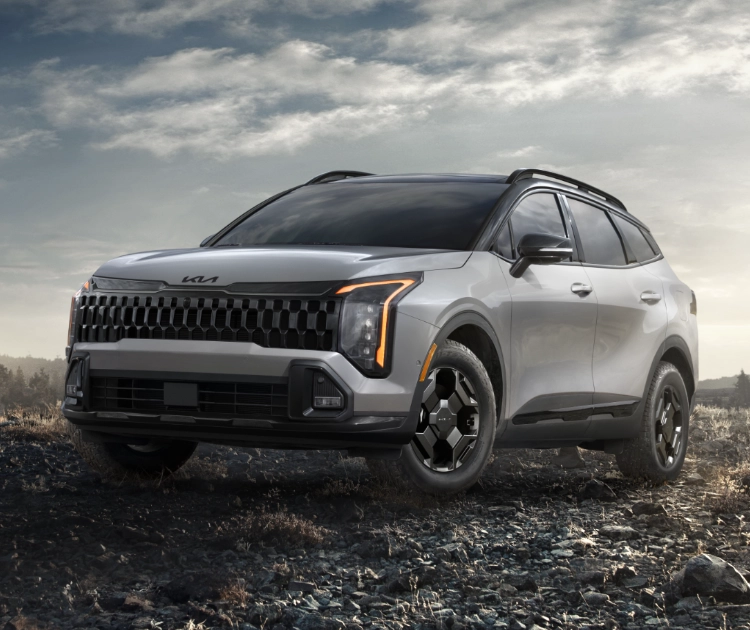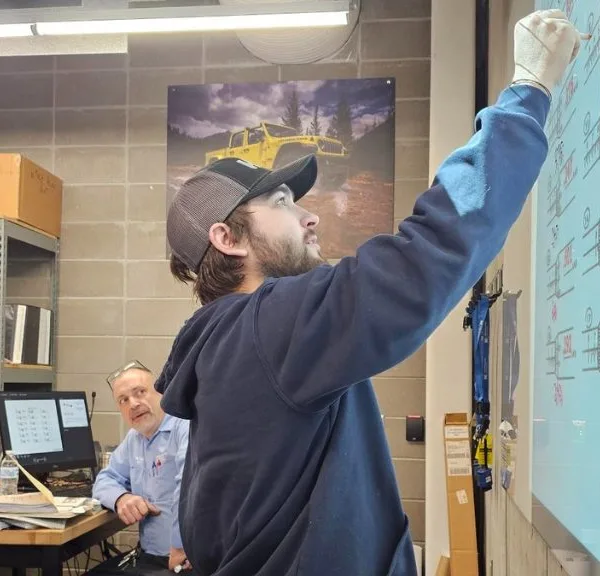Living in Omaha means you’re perfectly positioned for some incredible road trips.
Whether you’re heading west to the Black Hills, north to the Twin Cities, south to Kansas City, or making that long haul to Denver or Chicago, the drive can be both exhilarating and exhausting.
The good news?
Modern vehicles have transformed road tripping from a white-knuckle endurance test into something far more manageable—and even enjoyable.
In This Post
- Why This Matters for Omaha Drivers
- Chevrolet’s Super Cruise: The Gold Standard for Highway Driving
- Kia’s Drive Wise: Sophisticated Safety for Every Budget
- Jeep & Ram: Stellantis’ Hands-Free Active Driving Assist
- Dodge: Practical Safety for Families
- Real-World Omaha Scenarios
- The Bottom Line: Is It Worth It?
- The Future Looks Bright
- References

Why This Matters for Omaha Drivers
Let’s be honest: Nebraska and the surrounding region are built for driving. We’ve got I-80 cutting straight across the state, I-29 running north-south, and plenty of two-lane highways connecting everything in between.
But those long, straight stretches—especially across western Nebraska or eastern Colorado—can be hypnotic and exhausting. That’s where driver assist technology becomes more than a luxury; it becomes a genuine safety feature.
These systems aren’t about replacing you as a driver. They’re about reducing fatigue on those monotonous highway stretches, helping you stay alert in stop-and-go traffic when construction season hits (because it always does), and giving you an extra set of electronic eyes when you’re checking blind spots while merging.
Looking for the Best Lease Deals in Omaha? We’ve compiled a list!
Chevrolet’s Super Cruise: The Gold Standard for Highway Driving
If you’re in the market for a Chevy and do a lot of highway driving, Super Cruise deserves your serious attention. This system has been recognized by MotorTrend as the best hands-free driving technology available, and it works on about 750,000 miles of mapped roads across the US and Canada by the end of 2025.
Here’s what makes Super Cruise special: It’s a true hands-free system on compatible roads that uses precision LiDAR map data, GPS, cameras, and sensors to maintain vehicle control. The key phrase is “compatible roads,” and the good news for us is that most major highways in and around Omaha qualify, including I-80, I-29, and Highway 75.
Available on these 2025 Chevy models:
- Silverado 1500 (including trailering support)
- Traverse
- Tahoe
- Suburban
- Equinox EV
- Blazer EV
- Silverado EV

Ready to Try Super Cruise? Test Drive a Silverado Today!
What really sets Super Cruise apart is how it works. The system uses an infrared camera to monitor your attention—you need to keep your eyes on the road, but your hands can rest in your lap. When you’re heading west on I-80 through that endless stretch past Kearney, being able to let the vehicle handle the steering while you focus on traffic ahead? That’s transformative.
The system includes automatic lane changing, too. Simply activate your turn signal, and the system will check for an opening and change lanes without further input from you. For passing slower traffic or positioning yourself for an exit, this feature alone can reduce driver fatigue significantly.
Important note: All Super Cruise-equipped vehicles include three years of connectivity to support functionality, after which you’ll need to purchase an eligible OnStar Super Cruise plan at $39.99 per month.
Kia’s Drive Wise: Sophisticated Safety for Every Budget
Kia has been making serious waves in the driver assistance game with their Drive Wise suite of technologies. What I appreciate about Kia is that they’re bringing advanced features to more affordable price points, which matters when you’re shopping on a real-world budget.
The star of Kia’s lineup is Highway Driving Assist 2 (HDA2), which combines adaptive cruise control with lane-centering assistance and now includes machine learning capability and lane-change assist features. While it’s not hands-free like Super Cruise, it significantly reduces the effort required to maintain your position and speed on the highway.
Key Kia Drive Wise Features:
Forward Collision-Avoidance Assist (FCA) This system uses automatic braking to avoid or lessen the effects of collisions with pedestrians, cyclists, or vehicles detected in front. In Omaha’s increasingly busy traffic, especially around the I-680/Dodge Street interchange during rush hour, having this extra safety net provides real peace of mind.
Smart Cruise Control with Stop & Go This feature helps maintain a safe following distance from the car ahead, adjusts speed automatically, and can bring your vehicle to a complete stop when traffic slows—resuming movement within three seconds without driver input. Anyone who’s dealt with construction traffic through Lincoln or Des Moines knows how valuable this is.
Blind-Spot View Monitor When you activate your turn signal, the system displays a live video feed of your rear blind spots onto your instrument cluster. This is particularly helpful when merging onto I-480 or making lane changes in heavy traffic.
Surround View Monitor Using four cameras, this system provides a 360-degree view around your vehicle, perfect for tight parking situations. Whether you’re parallel parking in the Old Market or navigating a crowded grocery store parking lot, this takes the guesswork out of tight maneuvers.
Kia’s systems are available across their lineup, including the Sportage, Telluride, K4, and other models. The best part? Many of these features are becoming standard equipment rather than expensive add-ons.
Jeep & Ram: Stellantis’ Hands-Free Active Driving Assist
Both Jeep and Ram now offer Hands-Free Active Driving Assist, Stellantis’ answer to GM’s Super Cruise and Ford’s BlueCruise. This Level 2 hands-free driver-assist system allows drivers to take their hands off the steering wheel at speeds up to 85 mph on mapped roads, though the driver must continue to watch the road.
How It Works
The system uses radar sensors, forward-facing cameras, and an infrared camera on the steering column that monitors your eyes to ensure you’re paying attention. If you look away from the road for more than a few seconds, the system provides escalating alerts—visual, audible, and even seat vibrations—to get your attention back where it belongs.

Try Hands-Free Active Driving Assist Yourself? Test Drive a Ram Today!
Ram 1500 Features:
- Standard on Tungsten trim
- Available on RHO, Laramie, Limited, and Limited Longhorn trims
- Includes Assisted Lane Change System and curve speed management that automatically adjusts speed approaching curves
- Works with an Integrated Trailer Health Monitor that displays critical towing metrics right on your digital cluster
Jeep Grand Cherokee Features:
- Available on Overland and Summit trims with the 3.6-liter V6 engine
- $2,995 option that includes a 3-year trial
- Works on over 200,000 miles of compatible roads
The Reality Check
Here’s the honest truth: Hands-Free Active Driving Assist currently works on about 125,000 miles of compatible roads, which is less than GM’s 750,000 miles but growing. For Omaha drivers, this means it works well on I-80 and other major interstates, but you might find more limited coverage on secondary highways compared to Super Cruise.
However, Ram and Jeep vehicles also include standard Active Driving Assist (hands-on version) that works on any appropriately marked road, constantly monitoring your vehicle’s position and making subtle steering adjustments to keep you centered in your lane.
Dodge: Practical Safety for Families
While Dodge doesn’t currently offer hands-free driving on their Durango or Hornet models, they haven’t skimped on driver assistance features. These are practical, family-focused technologies that make everyday driving safer and less stressful.
2025 Dodge Durango Features:
LaneSense Lane Departure Warning with Lane Keep Assist This system provides audible and visual alerts when unintentional lane drift is detected and can provide steering input to help keep your vehicle from drifting out of its lane.
Blind Spot Monitoring with Trailer Tow Detection When towing, the system alerts you if a vehicle is in your blind spot or on the side of your trailer—making those trips to pull campers to Lewis and Clark Lake or boats to Lake McConaughy much safer.
Forward Collision Warning with Full Stop The system uses audible and visible alerts to warn of potential forward collisions and can use automated emergency braking to bring the vehicle to a full stop.
Adaptive Cruise Control with Stop This maintains a safe distance from vehicles ahead and can bring your Durango to a complete stop in traffic—essential for navigating congested areas like downtown Omaha or approaching the Eppley Airfield.
2025 Dodge Hornet Features:
The Hornet is Dodge’s entry into the compact SUV market, and it comes with available Active Driving Assist that integrates Adaptive Cruise Control and Lane Keep Assist, which can be activated at highway speeds or in stop-and-go situations. While not hands-free, it significantly reduces driver workload on longer trips.
Additional Hornet features include:
- 360-degree Surround View Camera using four strategically positioned cameras
- Park-Sense Parallel and Perpendicular Park Assist that steers the vehicle into tight spaces
- Traffic Sign Recognition that monitors legal speed limits
- Forward automatic emergency braking with pedestrian and cyclist detection
Real-World Omaha Scenarios
Let me paint some pictures of how these technologies work in situations you’ll actually encounter:
Scenario 1: Weekend Trip to Denver You’re heading west on I-80 through that long stretch past North Platte. With Chevy’s Super Cruise or Ram’s Hands-Free Active Driving Assist, you can let the vehicle handle steering while you focus on monitoring traffic and enjoying the scenery. Your hands rest comfortably while the adaptive cruise maintains your speed and following distance. The fatigue reduction is real and measurable.
Scenario 2: Summer Traffic to the Black Hills Highway 20 through northern Nebraska gets busy during summer tourist season. With any of these brands’ adaptive cruise control systems, your vehicle automatically adjusts speed as traffic slows and speeds up, eliminating the constant brake-and-accelerate dance that makes traffic jams so tiring.
Scenario 3: Parallel Parking in the Old Market You’ve finally found a spot on 11th Street. With Kia’s Surround View Monitor or Dodge Hornet’s 360-degree camera, you can see exactly where your bumpers are relative to the cars in front and behind. Some systems will even park the vehicle for you—though practicing your parallel parking skills never hurts!
Scenario 4: Towing Your Camper to Lake McConaughy You’re pulling your travel trailer, and vehicles keep appearing in your blind spots as you merge on I-80. Ram’s Blind Spot Monitoring with Trailer Tow Detection accounts for your trailer’s width and alerts you to vehicles you literally cannot see. The Integrated Trailer Health Monitor keeps you informed about tire pressure and other critical metrics.
The Bottom Line: Is It Worth It?
Here’s my straight talk: if you regularly drive more than 30 minutes on highways, these driver assist features are absolutely worth considering. They’re not about being lazy or inattentive. They’re about arriving at your destination less exhausted and more alert.
For Omaha drivers specifically, I’d recommend:
Prioritize hands-free systems if:
- You frequently drive I-80 for more than two hours at a stretch
- You make regular trips to Denver, Kansas City, Chicago, or Minneapolis
- You have a long commute on major highways
- Driver fatigue is a concern for you or your family
Hands-on systems work great if:
- Your driving is mostly around town with occasional longer trips
- You’re budget-conscious but still want safety features
- You prefer to maintain more direct control but appreciate assistance
- You drive a mix of highways and secondary roads
The Future Looks Bright
The technology is evolving rapidly. Over-the-air updates mean your vehicle’s capabilities can actually improve over time. More roads are being mapped for hands-free operation. Machine learning is making these systems smarter and more responsive to driving patterns.
For those of us calling Omaha home and regularly traversing Nebraska’s highways, these technologies represent a genuine improvement in driving safety and comfort. Whether you’re commuting to Lincoln, hauling a boat to the lake, or embarking on that epic road trip to Yellowstone, having an electronic co-pilot that never gets tired or distracted adds a valuable safety margin.
The best tech is the kind that fades into the background and just works—and that’s exactly where driver assist systems have arrived. They’re ready for Nebraska’s big skies and long roads.
References
This blog post was researched using information from the following sources:
Kia Drive Wise & Safety Technology:
- Kia America Official Website – ADAS Technology Overview
https://www.kia.com/us/en/adas.html - “A Closer Look at the Kia Driver Assistance Technology in the 2025 Kia K4” – Car Pros Kia (February 2025)
https://www.carproskia.com/blog/kia-driver-assistance-technology-in-the-2025-kia-k4-what-you-need-to-know/ - “2025 Kia K4 Driver Assistance Systems” – Car Pros Kia Renton (May 2025)
https://www.rentonkia.com/blog/2025-kia-k4-driver-assistance-systems/ - 2025 Kia K4 Official Product Page
https://www.kia.com/us/en/k4 - “What is Kia Highway Driving Assist 2?” – JD Power
https://www.jdpower.com/cars/shopping-guides/what-is-kia-highway-driving-assist-2 - “2024 Kia Models: Leading the Way in Advanced Safety Technologies” – DARCARS Lanham Kia (February 2024)
https://www.darcarslanhamkia.com/blogs/3403/2024-kia-models-leading-the-way-in-advanced-safety-technologies/
Chevrolet Super Cruise:
- Chevrolet Official Website – Super Cruise Technology
https://www.chevrolet.com/super-cruise - “MotorTrend Best Tech Awards 2025: Why We Trust GM’s Super Cruise Driver-Assistance System” – MotorTrend (February 2025)
https://www.motortrend.com/news/best-tech-2025-gm-super-cruise-driver-assistance - Chevrolet Vehicle Support – About Super Cruise
https://www.chevrolet.com/support/vehicle/driving-safety/driver-assistance/super-cruise - “Super Cruise 101: All you need to know about GM’s hands-free driver assistance system” – GM News (February 2025)
https://news.gm.com/home.detail.html/Pages/topic/us/en/2025/feb/0228-supercruise.html - OnStar Official Website – Super Cruise Hands-Free Driving
https://www.onstar.com/services/super-cruise-hands-free-driving - “Which 2025 Chevy Models Have Super Cruise?” – Gordon Chevrolet (July 2025)
https://www.gordonchevy.com/which-2025-chevy-models-have-super-cruise/
Jeep Active Driving Assist:
- Jeep Official Website – Active Driving Assist Features
https://www.jeep.com/active-driving-assist.html - “What is Jeep Active Driving Assist?” – JD Power
https://www.jdpower.com/cars/shopping-guides/what-is-jeep-active-driving-assist - “Jeep’s Hands-Free Driving System Is Now Available in 2024 Jeep Grand Cherokee” – Edmunds (February 2024)
https://www.edmunds.com/car-news/jeep-debuts-hands-free-driving-system-in-2024-jeep-grand-cherokee.html - “Review: Jeep and Ram’s Hands-Free Active Driver Assist system debuts late and behind the leaders” – Motor Authority (July 2024)
https://www.motorauthority.com/news/1143759_jeep-ram-hands-free-active-driver-assist-review - “Stellantis quietly launched its hands-free driver-assist system” – Motor Authority (June 2024)
https://www.motorauthority.com/news/1142310_stellantis-hands-free-active-driving-assist-system-launched
Ram Trucks Technology:
- Ram Trucks Official Website – Hands-Free Active Driving Assist
https://www.ramtrucks.com/active-driving-assist.html - “The 2025 Ram 1500 Tech and Driving Assist Features” – Lucas Smith Chrysler Center (December 2024)
https://www.lucassmithdodge.net/the-2025-ram-1500-tech-and-driving-assist-features/ - “2025 Ram 1500 Limited: Driving Hands-Free Across Ohio” – StellPower (October 2024)
https://www.stellpower.com/reviews-2024/2025-ram-1500-limited-driving-hands-free-across-ohio/ - “Inside the 2025 RAM 1500’s Upgraded Safety Features” – Lucas Smith Dodge (July 2025)
https://www.lucassmithdodge.net/inside-the-2025-ram-1500s-upgraded-safety-features/
Dodge Safety Features:
- Dodge Official Website – Durango Technology
https://www.dodge.com/durango/technology.html - Dodge Official Website – Hornet Features
https://www.dodge.com/hornet.html - “2025 Dodge Hornet Review, Pricing, and Specs” – Car and Driver (September 2024)
https://www.caranddriver.com/dodge/hornet - “2025 Dodge Hornet Review, Pricing, & Pictures” – U.S. News & World Report (October 2024)
https://cars.usnews.com/cars-trucks/dodge/hornet - “2025 Dodge Durango: Advanced Safety Features for Your Family” – Stoneridge Chrysler Jeep Dodge (May 2025)
https://www.stoneridgechryslerdodgejeep.com/blog/2025/may/9/2025-dodge-durango-advanced-safety-features-for-your-family.htm






